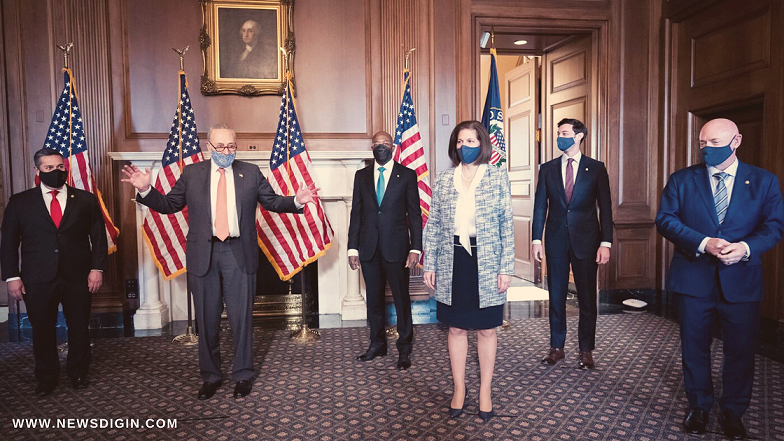
US Senate | US Process Of Reconciliation It Doesn’t Sound Like That: The US Senate is debating reconciliation to implement the ambitious infrastructural plans of President Joe Biden. Unfortunately, that is going beyond road and bridge to combat climate change and take care of the children and elderly using a procedural tool of the arcane Senate.
US Senate | US Process Of Reconciliation It Doesn’t Sound Like That

Reconciliation
It doesn’t sound as it does. What if adversaries settle their differences. It is instead the opposite: a tool for the majority in the Senate to overcome the opposition using legislative priorities.
Instead of 60 votes required by Senate rules to end the “filibusters” discussions, The reconciliation process allows the 100-member Senate to take action on a simple vote by majority vote. That means that Democrats with 50 Senate seats today can stop trying to get 10 Republicans to vote with them. Instead, Kamala Harris, Democratic Vice President, can break the tie and give a majority to the Party.
When And Why Reconciliation Initially Establishes?
The 1974 Congressional Budget Act established reconciliation. It allows legislators to adjust their expenses or revenues to meet a budget plan without support for the supermajority.
The Law was one of several Congresses adopted in the 1970s establishing exceptions to the 60-vote rule. Fast-track procedures for Congress also included approving commercial agreements or limiting the president’s ability to engage troops overseas.
Reconciliation Implementation
Reconciliation became the privileged way to allow a president to pass trademark legislation without receiving 60 votes. Since 1980, it is using more than 20 times.
Recognition is using to raise taxes by former Democrat President Bill Clinton; it uses to cut them by Republicans George W. Bush and Donald Trump. Barack Obama, a Democrat, using it to contribute to the development of the Obamacare Affordable Care Act.
In reconciliation, Biden has already used the package for $1,9 trillion of COVID-19.
But the process cannot use by majority parties at any time. It is because legislation must have a direct budgetary impact. And, more than once a year, reconciliation is generally not used. Some Democrats today have considered trying it more often, but recent guidance from the parliamentarians in the Senate has supposedly discouraged the idea.
This calendar year, because their previous use has linked to the financial budget of 2021, Biden’s Democrats can use reconciliation once more; they will now move on to preparation for fiscal budget 2022.
How Reconciliation Perform?
First, budget resolutions for committees pass with “reconciliation instructions.” These guidelines require the drafting of legislation that encompasses the program.
Efforts load into one project of reconciliation. As they look more like regulatory initiatives than fiscal issues, the parliamentary Senate can identify stripping points. If the federal minimum wage of 15 dollars an hour not including in the Conciliation Aid Act of COVID-19.
Generally, the majority respects the decisions of the parliamentarian. Senators can contest a decision, but 60 votes need to overturn it.
Party Unity Finish Line Needed
Ultimately, the US Senate must stick together to pass the bill. Democrats currently need to stick together to give one.
The COVID-19 aid package holds up for hours last March until centrist Democratic Senator Joe Manchin changes federal unemployment benefits. Again, all eyes are on Manchin with another bill of reconciliation are expecting he tells he’s open to the idea. They Are watching everything.
Also Read: